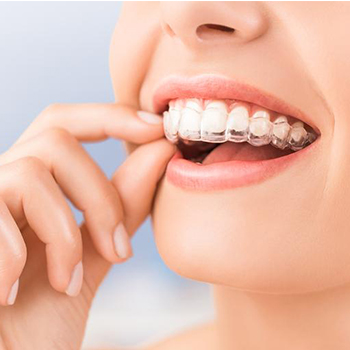Tooth Alignment
Tooth Alignment in Vijayawada, also known as occlusion, refers to the proper positioning and alignment of the upper and lower teeth when the jaw is closed. Proper tooth alignment is crucial for good oral health, proper bite function, and aesthetic appearance. Misaligned teeth can lead to various problems, including tooth wear, gum disease, and difficulties with biting and chewing.
Why Tooth Alignment ?
- Prevents Tooth Wear: Misaligned teeth can lead to excessive wear on the teeth, causing uneven chewing and biting surfaces, which can result in painful teeth and gums.
- Reduces Risk of Gum Disease: Proper tooth alignment helps ensure that the teeth fit together correctly, preventing bacteria buildup and reducing the risk of gum disease.
- Improves Oral Function: Proper tooth alignment helps distribute biting forces evenly, making it easier to chew, bite, and speak.
- Aesthetic Benefits: Straight, aligned teeth contribute to a more attractive and confident smile, boosting self-esteem and self-confidence.

- Eases Biting and Chewing: Proper tooth alignment ensures that the teeth fit together smoothly, making it easier to eat and speak.
- Prevents Head and Neck Pain: Misaligned teeth can lead to uneven jaw alignment, causing headaches and neck pain.
- Promotes Proper Jaw Function: Proper tooth alignment helps promote healthy jaw function, reducing the risk of teeth grinding and jaw disorders.
- Supports Overall Oral Health: Proper tooth alignment is essential for maintaining good oral health, preventing tooth decay, and reducing the risk of oral diseases.
Most common treatment options:
- Braces: Traditional metal braces in Vijayawada consist of brackets and wires that are fixed to the teeth. They gradually shift teeth into the desired position over time. This option is suitable for various alignment issues and is applicable to patients of all ages including Braces for Kids in Vijayawada .
- Clear Aligners: A popular alternative to traditional braces. They are made of transparent plastic and are removable, providing a discreet option for teeth straightening. Aligners are custom-made and require periodic changes to gradually align teeth.
- Lingual Braces: Similar to traditional braces, lingual braces are placed on the back of the teeth, making them virtually invisible. This option is great for those who want the effectiveness of braces without the visible appearance for Teeth Straightening in Vijayawada .
- Retainers: After undergoing orthodontic treatment, retainers help maintain teeth in their new positions. Some may require retainers for a prolonged period to prevent teeth from shifting back to their original misalignment.
- Tooth Contouring: In some cases, slight misalignment can be corrected through tooth contouring, where minor reshaping of the teeth is performed to improve their appearance and fit at Best Dental Hospital in Vijayawada .
- Veneers: Dental veneers are thin shells of porcelain or composite resin that cover the front surface of teeth. While primarily cosmetic, they can help improve the appearance of misaligned teeth, albeit not correcting the underlying alignment issues.
- Orthognathic Surgery: For severe misalignment affecting the jaw, orthognathic surgery may be necessary. This surgical procedure by Dr. Hanisha Adusumilli realigns the jaws and improves overall function and appearance.
Frequently Asked Questions [FAQ’s]
What are the symptoms of misaligned teeth?
Symptoms may include uneven bite, difficulty chewing, speech issues, and aesthetic concerns.
How are misaligned teeth diagnosed?
Diagnosis typically involves a dental examination, X-rays, and sometimes 3D imaging.
What are the health risks associated with misaligned teeth?
Potential risks include tooth decay, gum disease, jaw pain, and TMJ disorders
How do clear aligners work?
Clear aligners are a series of custom-made, removable trays that gradually shift teeth into place.
How long will I need braces or aligners?
Treatment duration can range from several months to a few years, depending on individual needs.
Are braces painful?
Some discomfort may occur after adjustments, but it typically subsides within a few days.
Can adults get braces?
Yes, orthodontic treatment is effective at any age, including adulthood.
Will wearing braces affect my diet?
Yes, you may need to avoid sticky, hard, or chewy foods to prevent damage to the braces.
Can whitening treatments be done with braces?
Whitening treatments are generally not recommended during active orthodontic treatment but can be done afterward.
How do I care for my teeth while wearing braces?
Rigorous oral hygiene, including regular brushing and flossing, is essential to maintain dental health with braces.